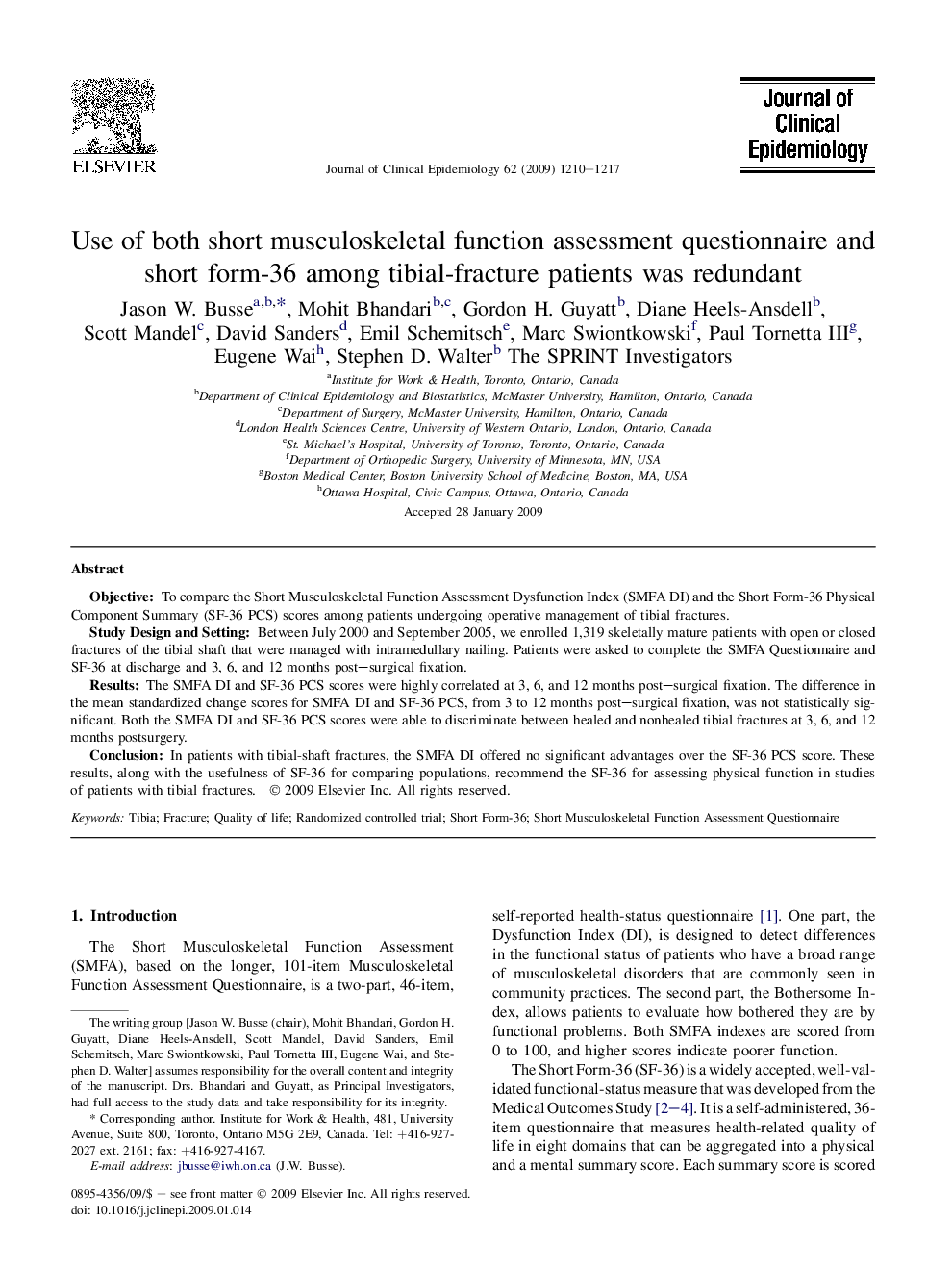| Article ID | Journal | Published Year | Pages | File Type |
|---|---|---|---|---|
| 1083400 | Journal of Clinical Epidemiology | 2009 | 8 Pages |
ObjectiveTo compare the Short Musculoskeletal Function Assessment Dysfunction Index (SMFA DI) and the Short Form-36 Physical Component Summary (SF-36 PCS) scores among patients undergoing operative management of tibial fractures.Study Design and SettingBetween July 2000 and September 2005, we enrolled 1,319 skeletally mature patients with open or closed fractures of the tibial shaft that were managed with intramedullary nailing. Patients were asked to complete the SMFA Questionnaire and SF-36 at discharge and 3, 6, and 12 months post–surgical fixation.ResultsThe SMFA DI and SF-36 PCS scores were highly correlated at 3, 6, and 12 months post–surgical fixation. The difference in the mean standardized change scores for SMFA DI and SF-36 PCS, from 3 to 12 months post–surgical fixation, was not statistically significant. Both the SMFA DI and SF-36 PCS scores were able to discriminate between healed and nonhealed tibial fractures at 3, 6, and 12 months postsurgery.ConclusionIn patients with tibial-shaft fractures, the SMFA DI offered no significant advantages over the SF-36 PCS score. These results, along with the usefulness of SF-36 for comparing populations, recommend the SF-36 for assessing physical function in studies of patients with tibial fractures.
